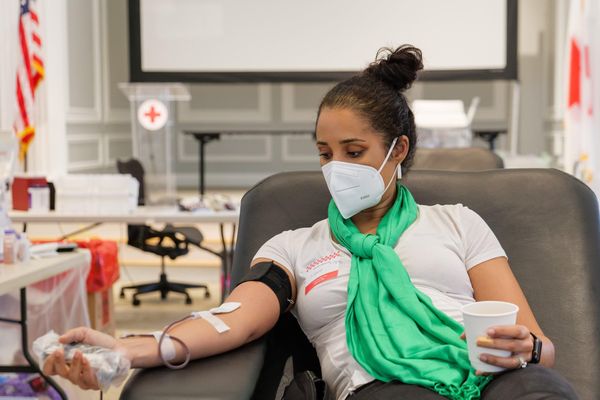It's possible you've already made some New Year's resolutions, like losing weight, exercising more, procrastinating less and having more fun. But it's not too late to roll up a sleeve and add another resolution to the list: one that could be help save a life—or up to three lives—each time you do it.
January is National Blood Donor Month, which the Red Cross began in 1970 to help increase blood and platelet donations during the winter months when it's more difficult to keep up with the demand.
Donations suffer when blood drives are canceled due to dangerous road conditions or when people just don't want to go out in harsh and unpredictable weather. Seasonal illnesses, like colds and the flu, also can render donors temporarily unable to donate.
Every two seconds in the United States, someone needs blood. And since blood and platelets cannot be manufactured, they must come from humans. But donated blood or platelets can be hard to come by: Less than 38 percent of the population is eligible for donation. And, sadly, out of those who are able, only 10 percent donate each year. (Donors must weigh at least 110 pounds and be in generally good health. The American Red Cross offers more comprehensive information about donating requirements.
About one pint of blood is given during a donation. Although one pint may sound like a lot, the fact is that our bodies contain about 10 pints.
Donations can be made every 56 days. That's because it takes your body four to six weeks to replace what you've lost. If you're giving just platelets, you can donate every seven days (up to 24 times a year), because the red cells and most of the plasma are returned to you after a machine separates the platelets. If you have type AB blood, you are an ideal plasma donor. Plasma can be collected simultaneously with platelets, but you my only donate plasma every 28 days, up to 13 times per year.
It's safe to donate blood, and most people feel just fine when the process is complete. It is possible to experience lightheadedness or dizziness during or after blood donation, but it's not typical. You can lessen your chances of any problems, if you follow the Red Cross tips for successful donation.
All Red Cross donation centers use sterile, disposable one-time use needles, so there's no need to fear that you will contract HIV or other viral diseases. And, to make the blood safe for all recipients, all blood donations go through rigorous testing, including HIV, West Nile virus, antibodies to hepatitis B and C viruses, bacterial contamination and other infectious diseases.
I truly hope you'll consider giving blood, like the other 6.8 million donors do each year. It's a precious gift to someone in need. Among those you might be helping in the process: newborn babies, cancer patients, car accident victims, sickle cell patients—and yourself.
You can go to the American Red Cross website and enter your zip code to find a schedule of blood drives near you. If you cannot donate blood, you can still support the cause by donating financially, volunteering at a blood drive and encouraging your friends and family to donate.







